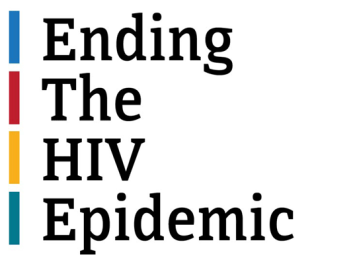
Ending the HIV Epidemic Initiative

The Ending the HIV Epidemic (EHE) Initiative is a collaborative effort across U.S. federal agencies to reduce the number of new HIV infections in the United States by 75 percent by 2025, and then by at least 90 percent by 2030, for an estimated 250,000 total HIV infections averted. The Ryan White HIV/AIDS Program is a key player in this effort. Many recipients and TA providers have received funding for intensive local and regional program planning, coordination, and implementation activities. Access the latest RWHAP data reports and slide decks, including the EHE Data Report.
See AHEAD.HIV.gov to track the initiative's progress and access TAP-in TA/training for EHE jurisdictions.
Website
- AETC National Coordinating Resource Center (NCRC)
- National Clinician Consultation Center
- Centers for Disease Control and Prevention (CDC)
- SAMHSA
Best Practices
- HRSA Bureau of Primary Health Care (BPHC), Centers for Disease Control and Prevention (CDC)